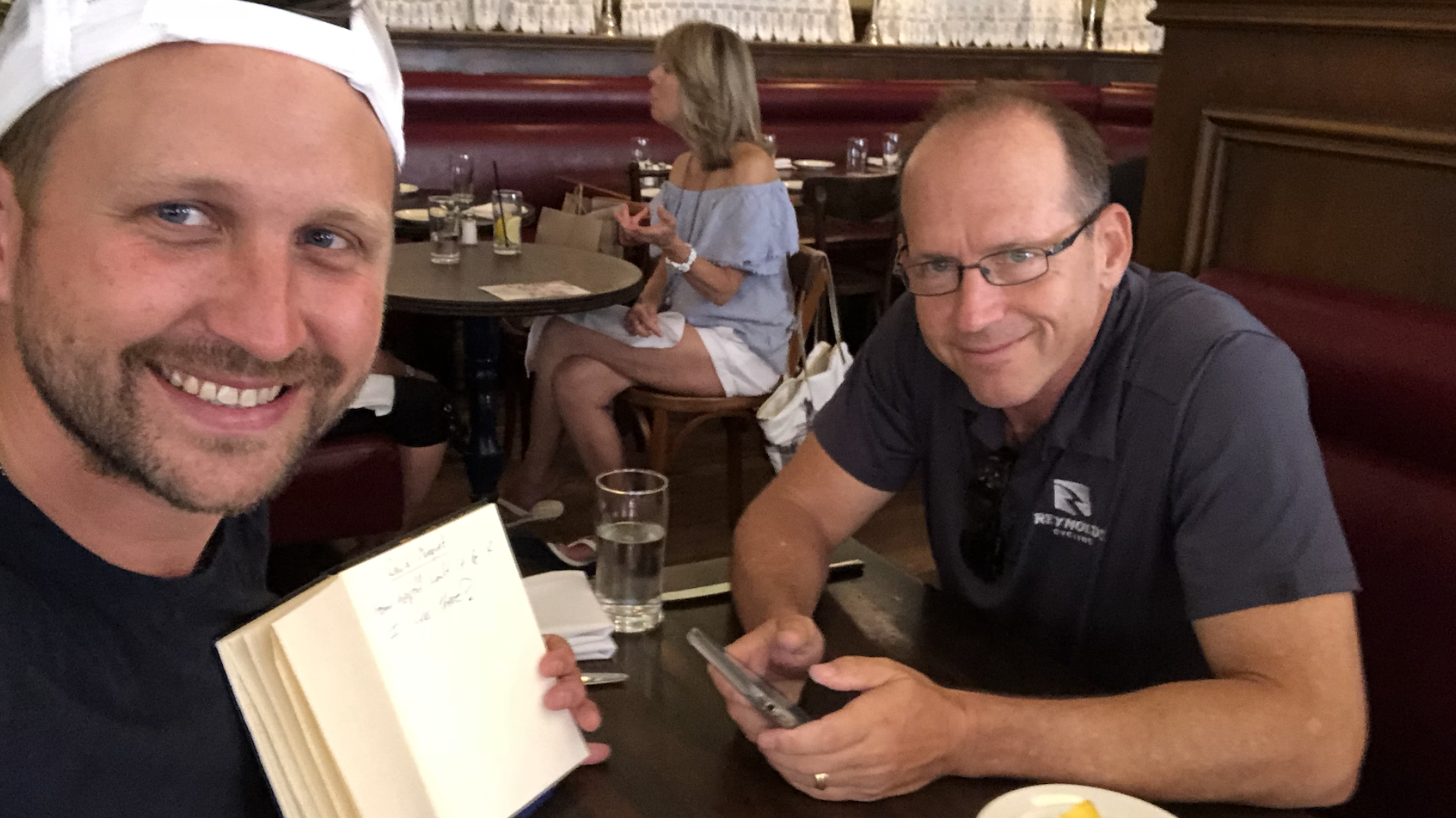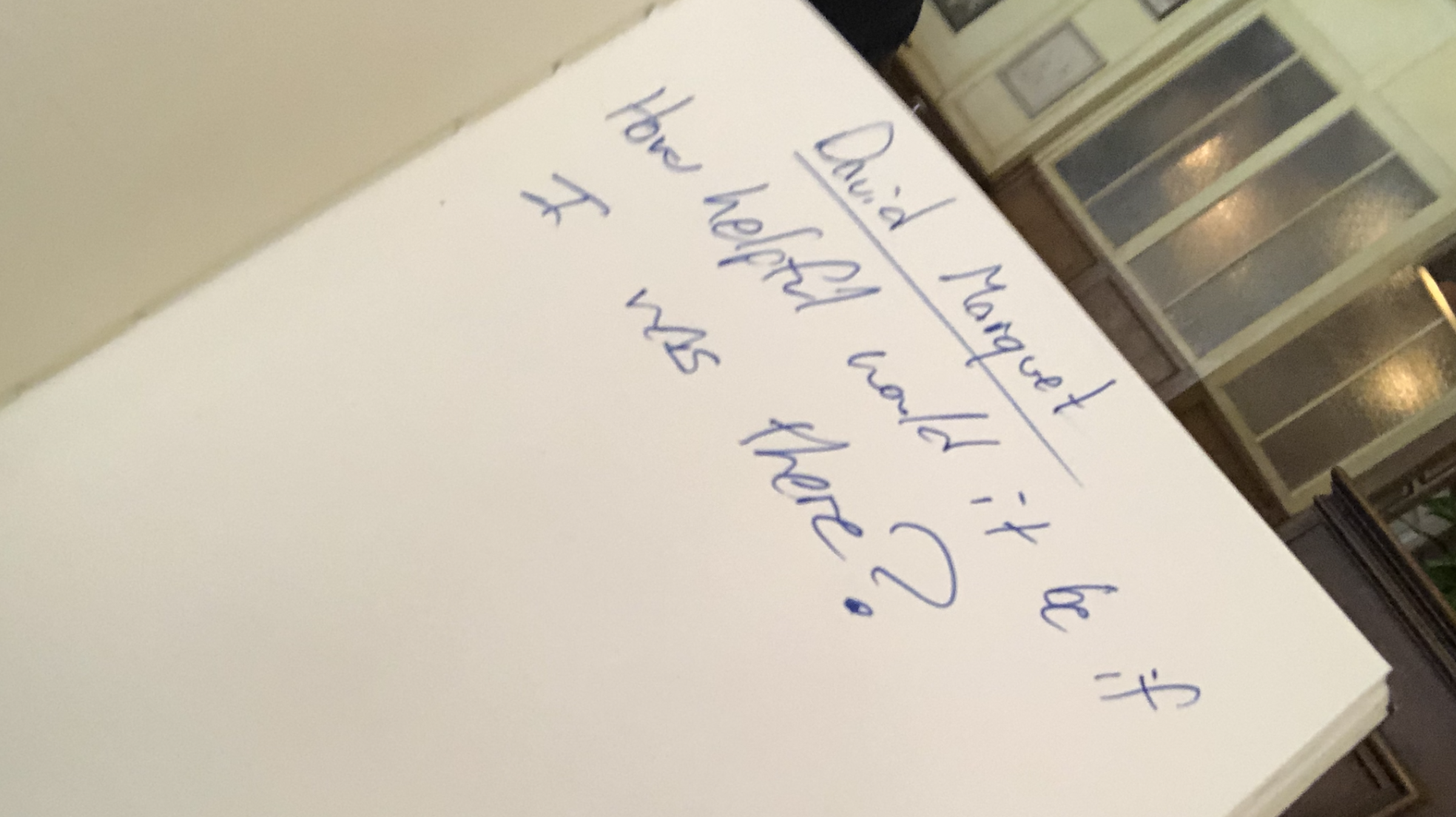The One Question That Almost Killed Our Biggest Launch With Apple

The following post is an excerpt from David Marquet's book "Leadership is Language." David was the captain of a nuclear submarine and one of my favorite leaders in the world. David asked me to share when we were launching our biggest project with Apple and how one question almost led to me making the wrong decision. This one interaction taught me that answers are different based on the questions we ask. How did you like this story, 0-5? Let me know!
This excerpt is in Chapter 9, pg 247 in Leadership is Language.
It was six hours to game time at Citizen Bank Park in Philadelphia and things were not going well for the development team from Assist.
A few miles from the stadium, I had just sat down at a table for lunch with Shane Mac, the CEO of Assist, when he received a text message from the project lead saying they were having problems.
Shane and I had collaborated on several projects in the past; I was particularly impressed by the empowering and enlightened way he ran his company. Shane had explained to me that this project was particularly complicated.
They planned to field-test a new product powered by chatbots at the Phillies stadium. The product would enable people to scan a bar code on the back of their seats with their iPhones, select the beer or food they wanted, enter their seat number, and have an attendant show up with their order moments later. The payment will be made through Apple Pay.
It required interfaces between several company software systems, the service organization at the stadium that would handle the physical delivery of the orders, the stadium, and an intermediary. It was Apple's first time allowing a brand to do this inside of iMessage. This test was a big deal for Assist. And for Apple. The stakes were high. Several other major technology companies were evaluating bringing Assist on board for similar projects—and waiting to see how this experiment worked with Apple.
Things seemed to be on track, and then he got the text telling him they weren't. The other partner they worked with didn't train the agents on the correct software. It was now a scramble.
Shane called his project lead, a woman with a strong reputation in the technology industry who was at the stadium working through the issues. At this point, some of the other groups involved were going into defensive mode, getting their excuses ready to blame someone else if the test failed. The Apple executives were onsite, and Tim Cook even emailed about how excited they were about this project launch.
At the end of the short conversation, Shane said, "Tell me if you need me to come over." He followed up, "Would you tell me if you needed me there right now?" He said it rather emphatically, saying, " You would tell me if you needed me. There was a pause, then he said, "OK," and hung up and looked over to where the menu was sitting on the table.
She had said, "No, I'll be okay. You don't need to come here."
I had only heard Shane's side of the conversation, but I knew the outcome was based on how he'd phrased his response to the project lead.

I suggested he call his project lead back immediately and rephrase the last thing he’d said to this:
“How helpful would it be if I came over to the stadium, 0 to 5?”
He called. Then he said, "How helpful would it be if I came over to the stadium, 0 to 5?"
Pause. Then she answered. "5”
I was shocked. Shane’s eyes got big. He hung up, stood up, threw a $5 bill on the table, and called an Uber to take us to the stadium. We didn't even eat lunch.

This story has a happy ending: the teams solved the problem well before the Phillies took the field, and the demonstration worked. Apple even mentioned the successful launch on their Q3 18' earnings call.

I might have been the first person to order a beer on the system.

If you make a statement one way, you’ll get one response that leads to one outcome. Say it slightly differently, and you’ll have a different response and outcome.
When Shane said, “Tell me if you need me,” the project lead had to admit she needed help and give instructions to her CEO. Both are hard to do, even for a kick-ass, take-names project owner like the woman leading this development team.
Once he asked, “How helpful would it be if I came over?” it became a request for information. Notice how he phrased the question. He didn’t ask, “Would it be helpful … ?” That would have been a binary question that, again, would have made it just a bit harder for her to say “yes.”
Binary questions lead to the least friction outcome, especially with high-performing individuals who have a harder time asking for help.
"Do you need my help?" "No, I'm good."
Even if they need help, people typically default to the least friction, which usually means ending the conversation or interaction.
A simple trick for never asking binary questions is to always begin with the word "How..."
Instead of "Does anyone have any concerns?" No. It turns into "How could this go wrong?" And everyone has an answer.
Change the question, change the environment, change the outcome.
I want to tell you that these language changes are as certain as a light switch. They don’t, but every step you take to make it just a bit easier for others to feel safe to speak up will increase the likelihood that they will. These little probabilities, over time, over repeated meetings and interactions, will add up to a big change.
How did you like this story, 0-5? Let me know! Just hit reply!
